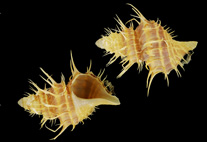Abstract
The genus Deontolaimus de Man, 1880 is revised and the genus Camacolaimus de Man, 1889 is considered a junior synonym of Deontolaimus based on re-examination of type material of Camacolaimus tardus de Man, 1889 and C. barbatus Warwick, 1970. Two known and three new species of Deontolaimus are described from bottom sediments collected in marine habitats of Sweden: Deontolaimus uniformis (Cobb, 1920) comb. n., D. longicauda (de Man, 1922) comb. n., Deontolaimus catalinae sp. n., D. paraguillei sp. n. and Deontolaimus timmi sp. n. Deontolaimus catalinae sp. n. is characterized by body length of 1.3–1.7 mm; anterior-most somatic sensilla located short distance posterior to amphid; cephalic sensilla equal to 0.2 labial region diameter in length; amphidial fovea ventrally-unispiral with one turn, located in front of cephalic sensilla bases; excretory pore located short distance posterior to onchiostyle base; onchiostyle with bluntly rounded tip and subcylindrical body; male with alveolar supplements extending from anterior end to middle of body, tubular supplements absent; spicules 36–40 µm long; and didelphic female reproductive system. Deontolaimus paraguillei sp. n. is characterized by body length of 1.4–1.8 mm; anterior-most somatic sensilla located at level with onchiostyle; cephalic sensilla equal to 0.2–0.3 labial region diameter in length; amphidial fovea ventrally-unispiral with one turn, located at level with cephalic sensilla bases; excretory pore located just posterior to nerve ring level; onchiostyle with bluntly rounded tip and subcylindrical body; male with alveolar supplements extending from anterior end to about three body diameters in front of cloaca, tubular supplements absent; spicules 42–46 µm long; and didelphic female reproductive system. Deontolaimus timmi sp. n. is characterized by body length of 0.7–0.9 mm; anterior-most somatic sensilla located at level with onchiostyle; cephalic sensilla equal to 0.2–0.3 labial region diameter in length; amphidial fovea ventrally-unispiral with one turn, located just in front of cephalic sensilla bases; excretory pore located just posterior to nerve ring level; onchiostyle with triangular tip with bluntly rounded apex and strongly sclerotized dorsal edge, and subcylindrical body; male with alveolar supplements extending from anterior end to anterior part of intestine, tubular supplements absent; spicules 28 µm long; and didelphic female reproductive system. The following nomenclatorial changes are proposed: genera Acontiolaimus Filipjev, 1918, Camacolaimoides De Coninck & Schuurmans Stekhoven, 1933, Camacolaimus de Man, 1889, Digitonchus Cobb, 1920 and Ypsilon Cobb, 1920 are synonimized with the genus Deontolaimus de Man, 1880; Camacolaimus reykjanesi De Coninck, 1943 and Camacolaimus glauxicola Allgén, 1951a are considered junior synonyms of Deontolaimus papillatus de Man, 1880; Camacolaimus barbatus apud Pastor de Ward, 1984 is described as the separate species Deontolaimus catalinae sp. n.; Camacolaimus tardus apud Lorenzen, 1969 is considered to be the separate species Deontolaimus lorenzeni nom. n.; Camacolaimus tardus apud Timm, 1963 is described as the separate species Deontolaimus timmi sp. n.; Camacolaimus barbatus Warwick, 1970 is considered a junior synonym of Deontolaimus tardus (de Man, 1889) comb. n.; Camacolaimus parvus Timm, 1961 is transferred to the genus Deontolaimus as D. parvus (Timm, 1961) comb. n.; Digitonchus cylindricaudatus Chitwood, 1951 is transferred to the genus Deontolaimus as D. cylindricaudatus (Chitwood, 1951) comb. n.; Ypsilon exile Cobb, 1920 is transferred to the genus Deontolaimus as D. exilis (Cobb, 1920) comb. n.; Camacolaimus guillei de Bovee, 1977 is transferred to the genus Deontolaimus as D. guillei (de Bovee, 1977) comb. n.; Camacolaimus longicauda de Man, 1922 is transferred to the genus Deontolaimus as D. longicauda (de Man, 1922) comb. n.; Camacolaimus monhystera Gerlach, 1967 is transferred to the genus Deontolaimus as D. monhystera (Gerlach, 1967) comb. n.; Camacolaimus pontollittoralis Uzunov, 1977 is transferred to the genus Deontolaimus as D. pontollittoralis (Uzunov, 1977) comb. n.; Camacolaimus praedator de Man, 1922 is transferred to the genus Deontolaimus as D. praedator (de Man, 1922) comb. n.; Camacolaimus prytherchi Chitwood, 1935 is transferred to the genus Deontolaimus as D. prytherchi (Chitwood, 1935) comb. n.; Camacolaimus tardus de Man, 1889 is transferred to the genus Deontolaimus as D. tardus (de Man, 1889) comb. n.; Camacolaimus trituberculatus Blome, 1982 is transferred to the genus Deontolaimus as D. trituberculatus (Blome, 1982) comb. n.; and Digitonchus uniformis Cobb, 1920 is transferred to the genus Deontolaimus as D. uniformis (Cobb, 1920) comb. n. A taxonomic review and identification key for species of the genus Deontolaimus are also given.

